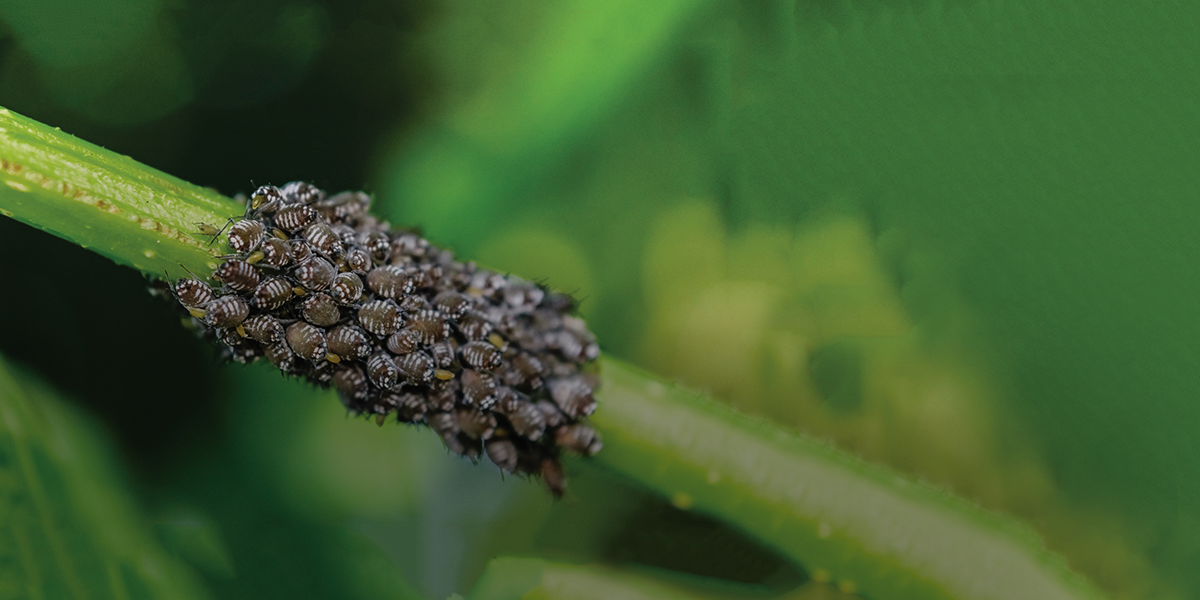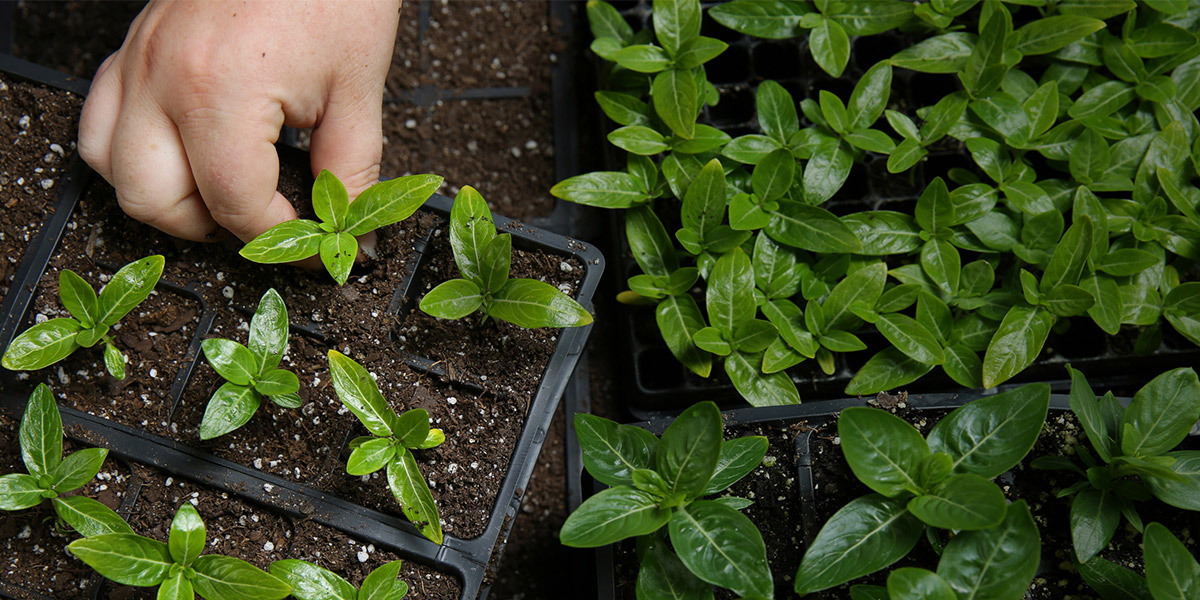The Relentless Thrips
No grower is ever thrips-free, but these destructive creatures can be mitigated.
Tiny but mighty, these pests bedevil growers all over the world.
More than 6,000 species of thrips roam the planet, yet only five are of real concern for growers, attacking an array of crops from fruits and vegetables to ornamentals. The damage to these crops is a result of thrips feeding on developing plant parts, causing deformed or scarred leaves and flowers — and worst of all, transmitting various tospoviruses such as impatiens necrotic spot virus (INSV) and tomato spotted wilt virus (TSWV). One of the most reviled species of all is the western flower thrips (Frankliniella occidentalis), which quickly multiplies and ravages a wide range of host plants, but especially ornamentals.
At a mere 1 to 1.5 millimeters long in adulthood, these tiny terrors inflict damage through feeding. “They have a super-special mouth part that’s like a big needle that injects into a plant cell, sucking out all the fluids from it, causing the cell to collapse,” says BASF Sales Specialist Leah Van der Heide, a former ornamental grower in southern California. “Then they pull it out and move to the next cell, scraping the tissue as they feed away. They don’t discriminate. They’ll feed on basically any soft plant tissue, other than roots.”
Once a thrips punctures and feeds on that plant cell, not only does it cause a visible mark on the plant, but it also kills the cell. This is especially problematic when the pests feed on developing plant parts because “it causes all this messed up growth,” Van der Heide says, “and if that wasn’t bad enough, if a feeding thrips is carrying around a tospovirus, the virus will be transmitted to the plant. Which is bad… I call it the kiss of death.”
Growers can spot larvae — nearly transparent white or yellowish to orangey yellow, with a large head and bright red eyes — and adults, which range from white to yellowish orange to almost black. Thrips have “a pointy butt that emits tiny black specs of fecal matter,” Van der Heide says, “plus tan, silvery, necrotic areas on the leaf can be really noticeable if the feeding is heavy enough.”
What makes thrips funky is also what makes them hard to control. “Egg to adult can happen in as little as 10 days, and adults can live for 30 to 45 days, depending on temperatures,” she says. “Each thrips has four or five generations that have their own four to five generations that have their own four to five generations, and so on. Because these reproducing adults live for so long and their lifecycles are so quick, it’s tricky to control them once a population is established, where every life stage is present.”
So, what’s a grower to do? Van der Heide suggests an integrated approach.
Scouting
Check anything and everything that comes into the greenhouse. “If there’s a plant, there’s thrips,” she says, advising growers to check all incoming material. “Even if it appears clean, an egg may have been ovo-deposited inside any of the soft green tissue from wherever you got it” she says. “I assume that they’re always there; if they’re not there, they’re going to be there really quickly.”
Monitor all crops at all stages, Van der Heide says, with yellow or blue (colors that attract thrips) sticky traps placed right above the plant’s canopy. Growers can also use the “tap” method by gently tapping the plant, while holding a white piece of paper below. If present, the pests will fall off the plant and onto the paper, where you can easily see and count them.
Blowing on flowers can also uncover hidden thrips “They hang out in the flower — adults especially. So, just blow inside the flower — the carbon dioxide agitates them, and they move around,” Van der Heide says.
Prevention
Isolate and inspect in-coming material. “Consider implementing dip applications of Nemasys® beneficial nematodes, Steinernema feltiae, oil and/or Velifer® fungal contact insecticide miticide, Beauveria bassiana, for unrooted cuttings, plugs and liners” she says. And confine infected plants to one contained area. “Don’t move infested plants to other growing areas because the thrips can easily spread to neighboring clean plants. When you move plants around, you’re literally doing the job for them,” she says.
She adds that thrips are “little hitchhikers” that can be carried by wind and on employees’ clothing. “If possible, be sure that the staff works in clean areas first, ending up in the not-so-clean areas at the end of the day.” Using properly positioned fans that blow air outwards at facility entrances can also help to knock any stow-away pests off entering personnel.
Since thrips travel so readily, grow-ers should screen vents and greenhouse doors, and shouldn’t leave greenhouse doors open. Also “Be clean — weed control is huge,” Van der Heide says. “Sweep up dirt around the growing area as thrips drop to the floor and into soil to pupate.”
Control
And if, despite all best efforts a thrips invasion occurs, Van der Heide says, “Literally everything you learned in school about pest management needs to be applied.” She recommends bio-control agents (BCAs) in combination, since each BCA targets a different life stage. For example, the predatory mite Amblyseius cucumeris only feeds on the first larval stage of thrips. While Orius insidiosus is an excellent thrips predator, “they can be very sensitive to chemicals – even a little residue can harm them, so make sure you’re releasing them early in the crop and avoid incompatible chemistries. Just be smart.”
Conventional chemistries, Van der Heide says, can be effective and will most likely be required at some point. But keep in mind: “There is known resistance to certain chemicals, so you have to make sure you’re rotating your mode of action and using insecticides in a very targeted, accurate approach at the right time, when it’s really required.” For example, Pylon® miticide-insecticide, chlorfenapyr, is “freaking amazing,” she says, “but it will harm beneficial insects and mites. The idea is to implement biological strate-gies early on, keeping pest populations low for as long as possible. Then, when the time comes to bring out the big guns, chemistries like chlorfenapyr and spinosad will work EXTRA well.”
Most of all, Van der Heide says, “You’re not alone. It’s okay. Ask for help. We can do it.”
*Always read and follow label directions.
Related



